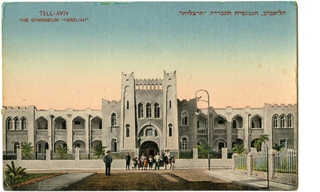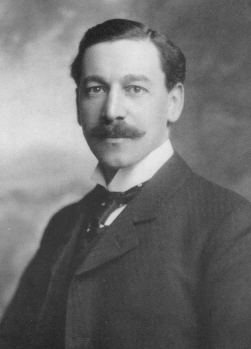1. He was born in August 1845 in Boulogne-Sur-Seine, the youngest son of James Jacob Rothschild, a French member of the Rothschild banking family.
2. His interests were not financial, but artistic and scientific. He founded institutions for scientific research in France, Spain and England, and sponsored archeological digs in Egypt, Syria and Palestine. A prodigious collector of art, he was to bequeath to the Louvre more than 40,000 engravings, almost 3000 drawings and 500 illustrated books. The gift included more than 100 drawings and engravings by Rembrandt. And this was only a part of his collection!
 3. In the wake of the Russian pogroms of 1881-2, he began cutting back on his purchases of art and buying up land from Ottoman landlords in Palestine, instead.
3. In the wake of the Russian pogroms of 1881-2, he began cutting back on his purchases of art and buying up land from Ottoman landlords in Palestine, instead.
4. It is estimated that he spent over $50 million supporting Jewish settlements in Palestine. He was the patron of Rishon LeZion, the first of the new settlements. Between 1883-9 he subsidized it, as well as Zikhron Yaakov, Rosh Pinna and Ekron, and over the years donated significant funds to other settlements, as well. Between 1900 and 1918, the number of Zionist colonies grew from 19 to 47, largely with his funding.
5. He promoted economic development, notably through wineries at Rishon LeZion and Zikhron Yaakov. In addition, he supported research in electricity and financed an electric generating station in Palestine.
6. Because of his involvement in so many young settlements, he became known as the Father of the Yishuv. And because of his wish to remain anonymous, in the background, he was called HaNadiv HaYadu’a, the Known Benefactor.
7. One thing he was known for was encouraging settlement by pious, Hebrew-speaking, agricultural immigrants.
8. In a 1934 letter to the League of Nations, he said, “the struggle to put an end to the Wandering Jew could not have as its result the creation of the Wandering Arab.”
 9. At his death in 1934, he left a legacy which included nearly 500,000 dunams of land in what is now Israel, and nearly 30 settlements.
9. At his death in 1934, he left a legacy which included nearly 500,000 dunams of land in what is now Israel, and nearly 30 settlements.
10. His will included a request to be buried in the Land of Israel. Originally interred in Paris, his remains and those of his wife were transported to Israel in 1954 and laid to rest in Ramat HaNadiv Memorial Gardens. In his memory, his son provided funds for the construction of the Knesset.
Want to know more? There’s an interesting video on YouTube. Search on “French Baron de Rothschild.”




